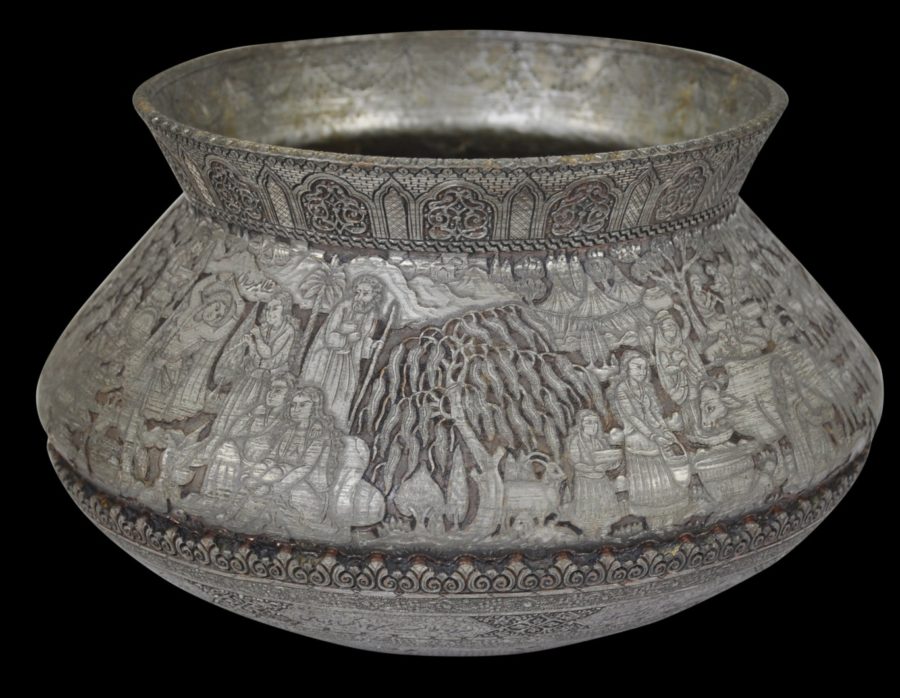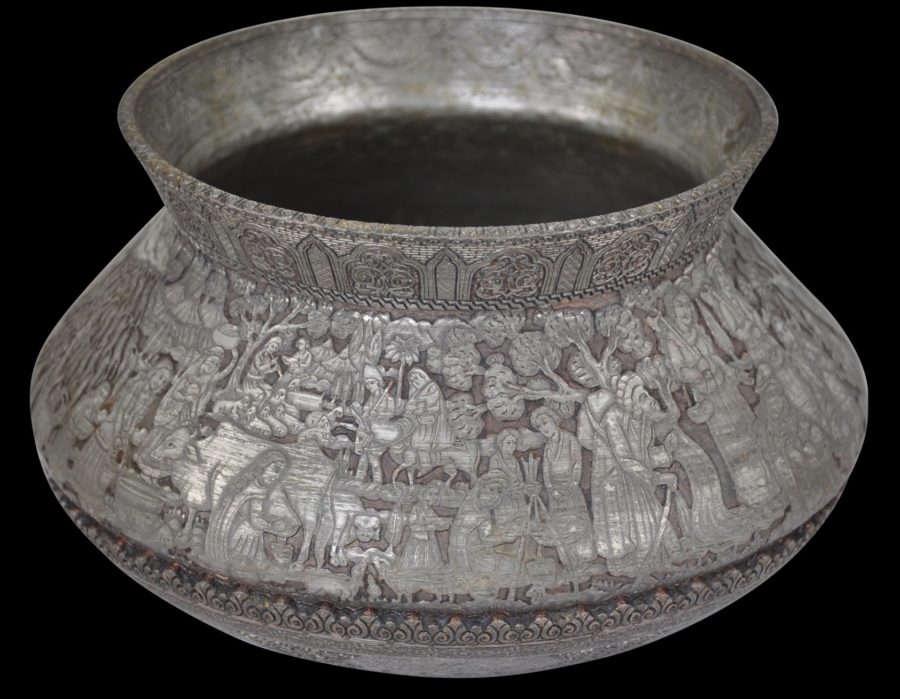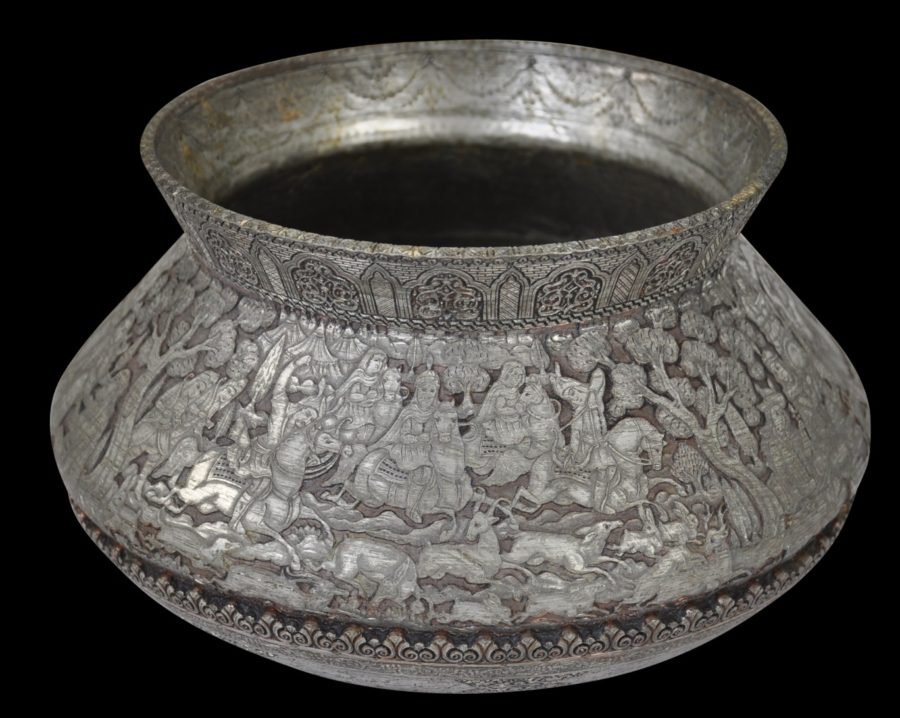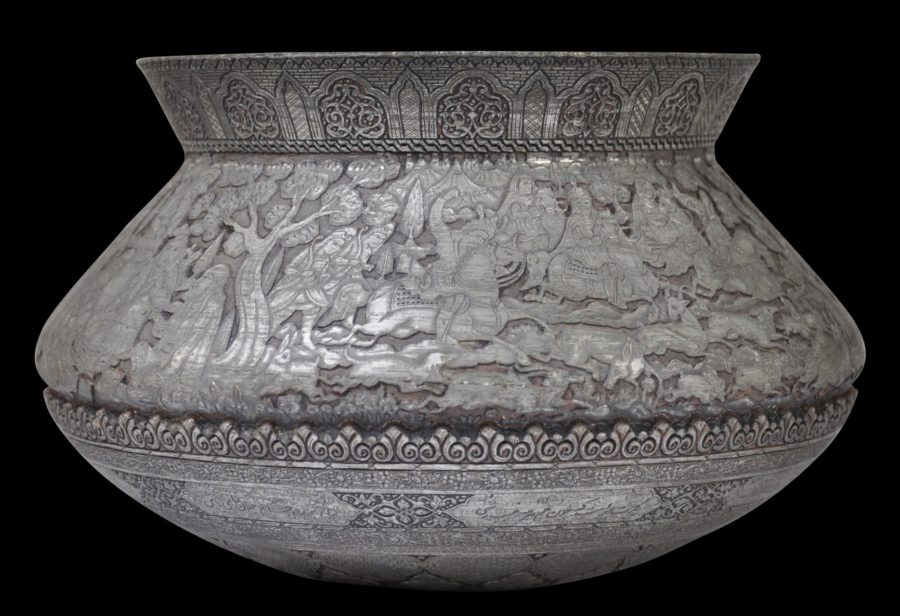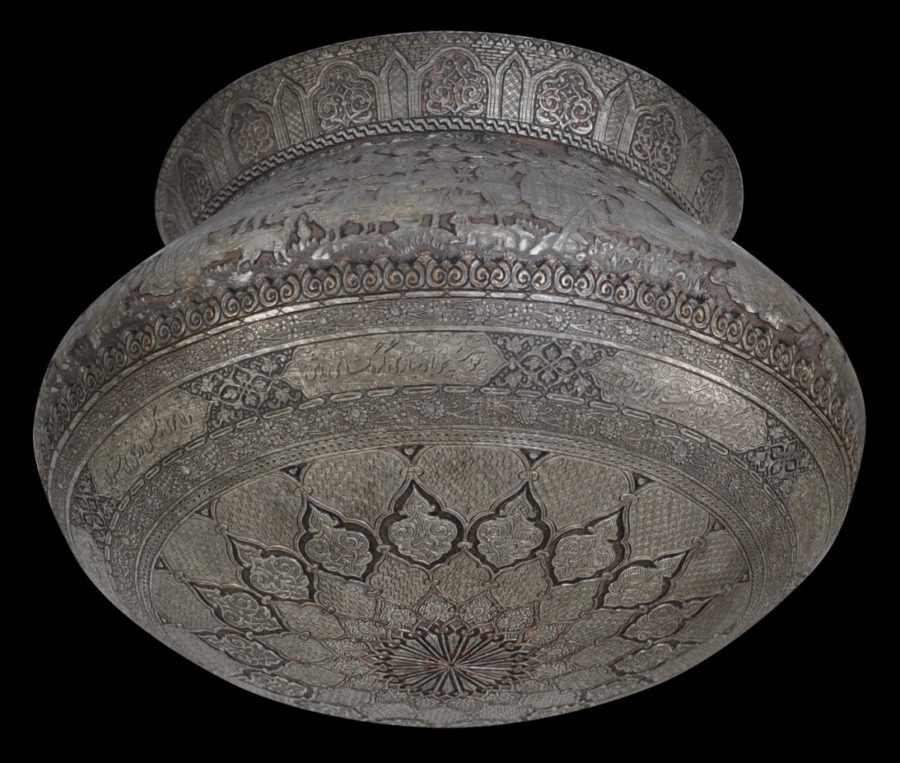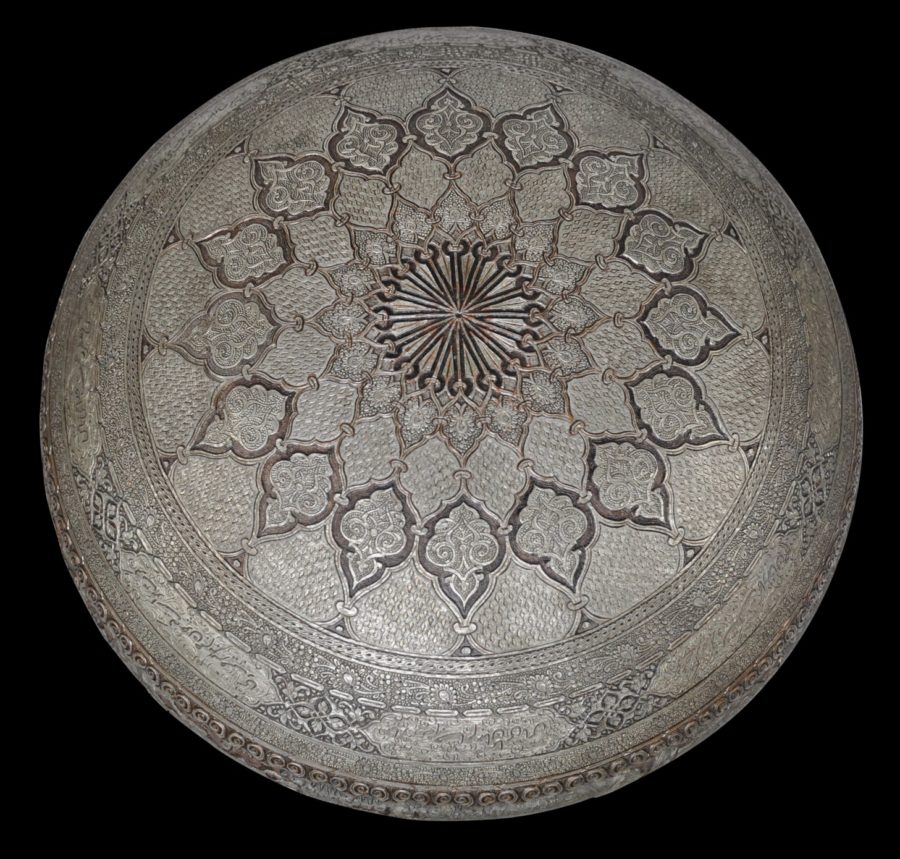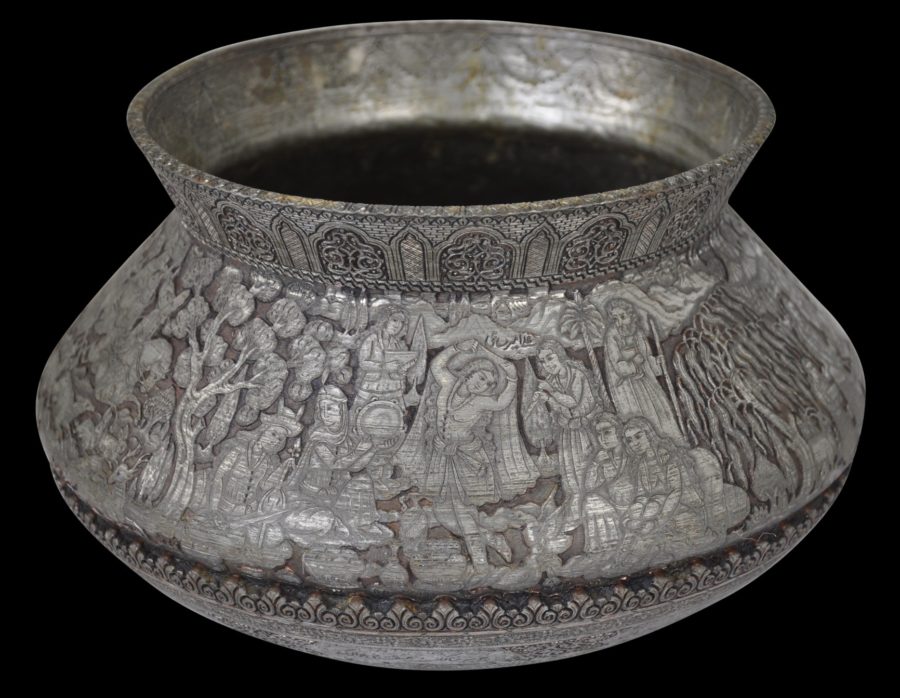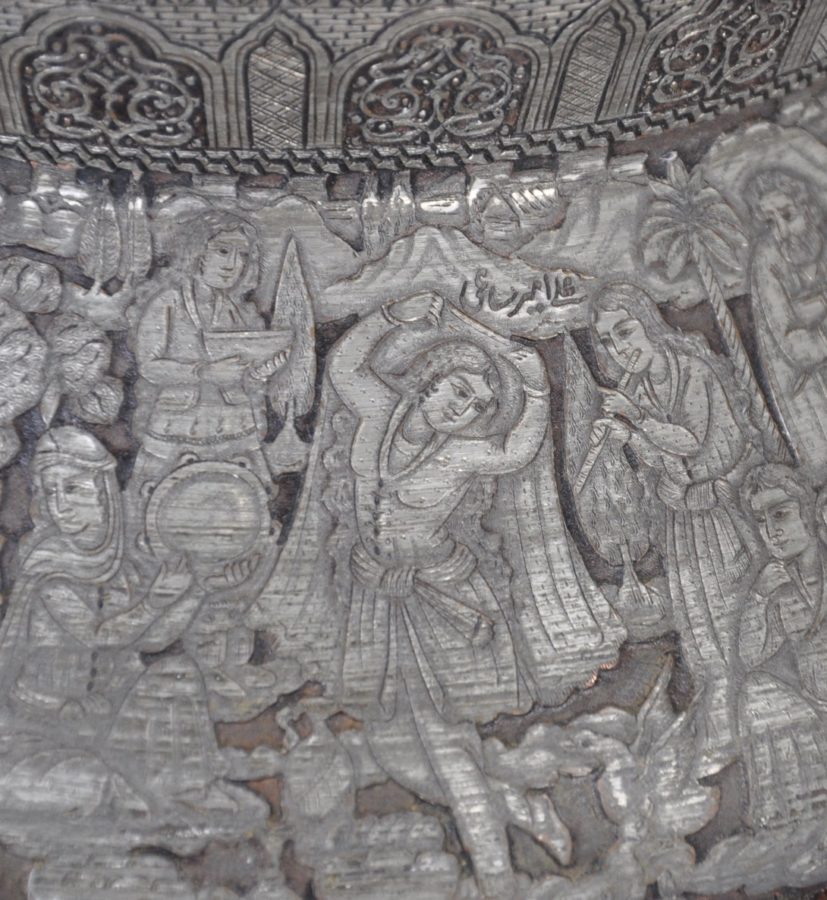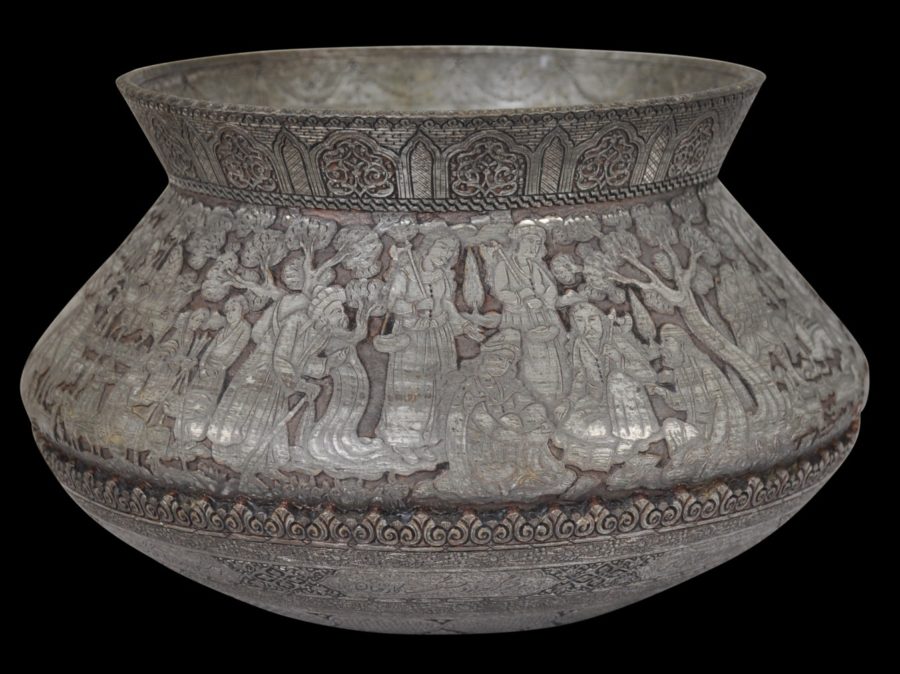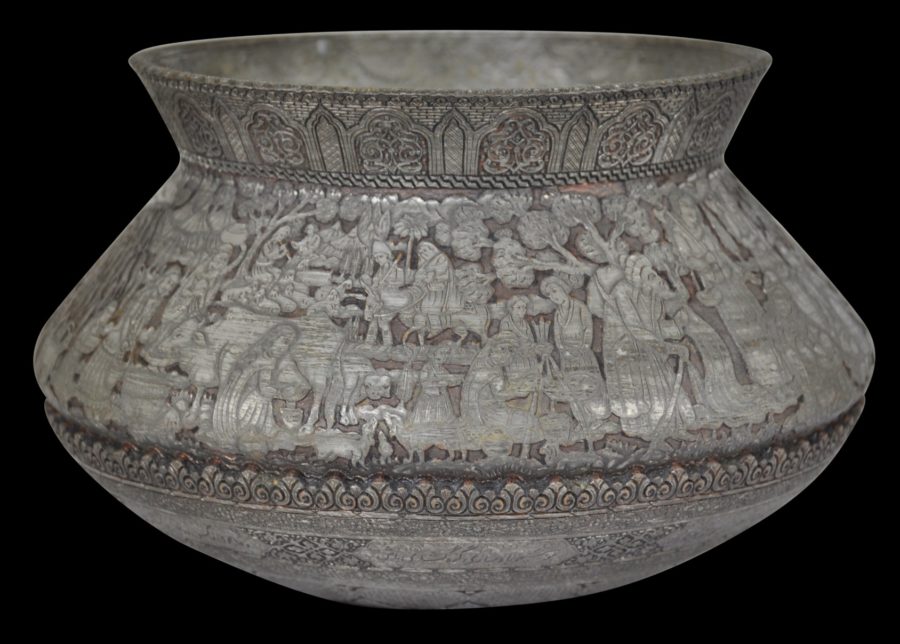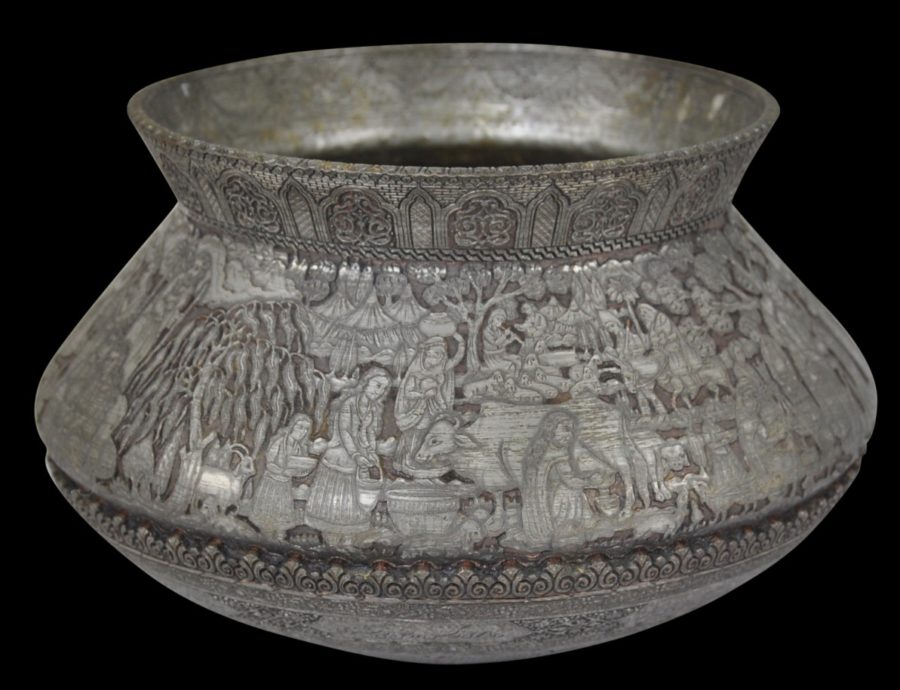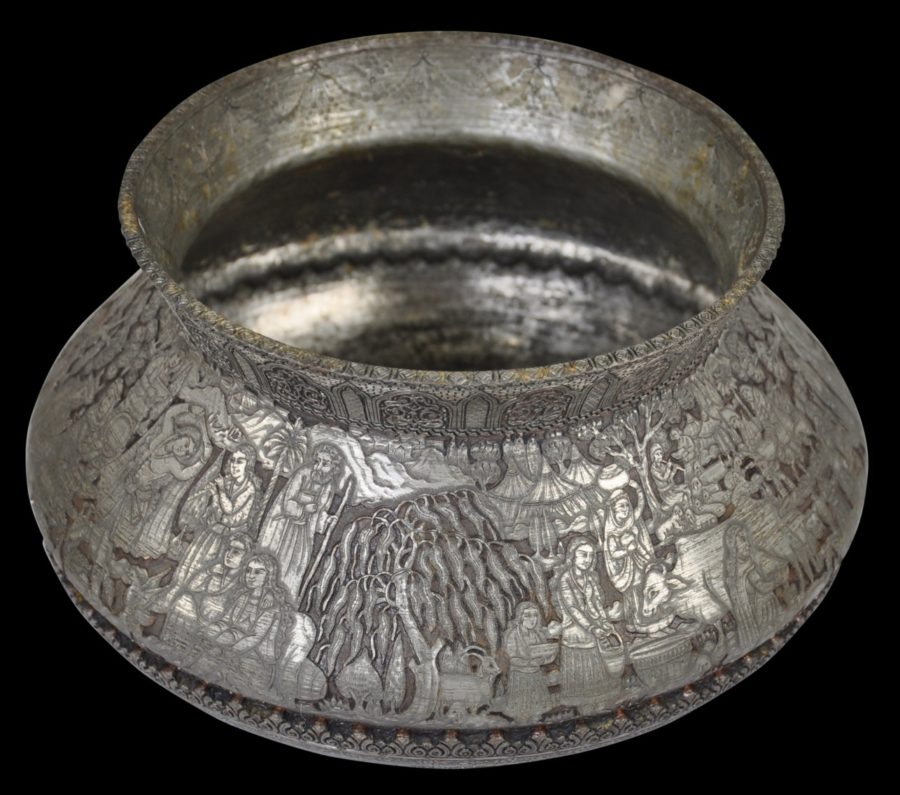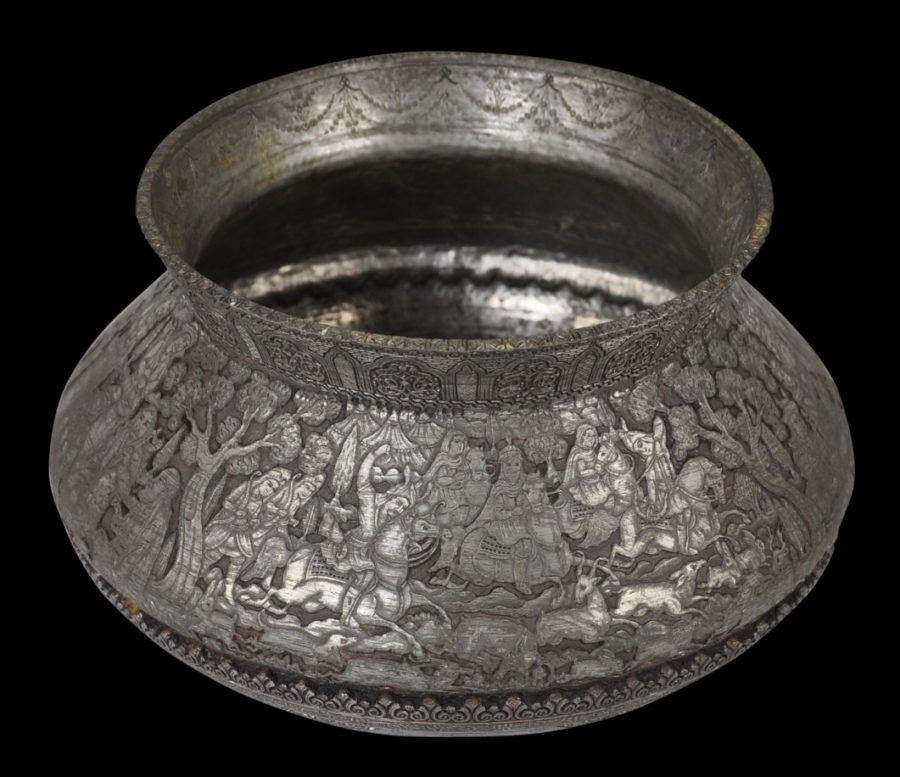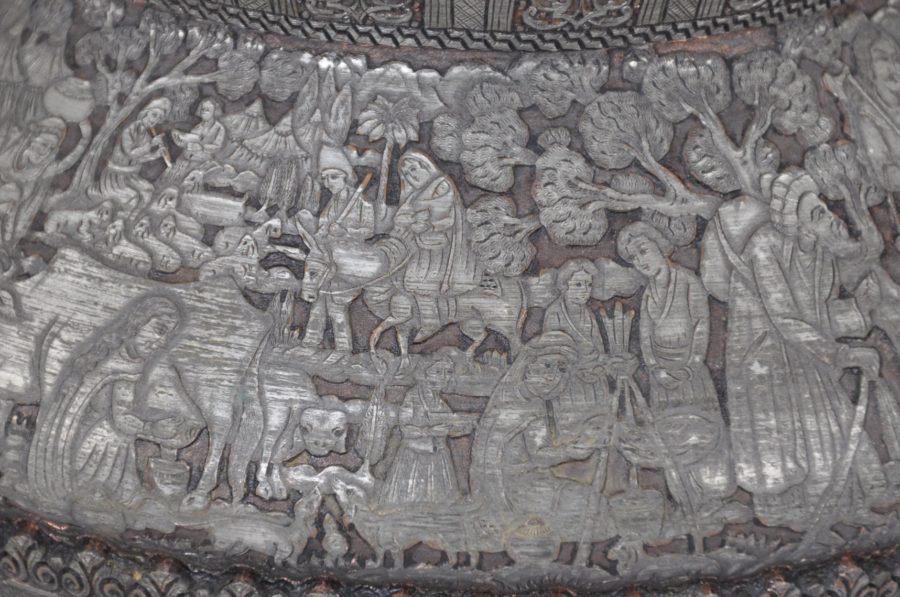This exceptionally fine vase or bowl is in the shape of a traditional water vessel or basin. It is of tinned, etched copper. The styling of the decoration dates it to the 19th century. It has rounded, flattened, spherical base, tapering sides and a mouth with a rim that opens outwards.
It is finely decorated all over with scenes form Persian lore, with figures in Persian dress, horses and other animals and beautifully rendered trees and other shrubbery, including a willow that seems to be copied from Chinese porcelain. Each of the figures is well executed with fine faces with well delineated features. The scenes are reminiscent of the artwork scene in Qajar miniature paintings, many of which seem to show appropriated Christian imagery.
The base is decorated with a complex series of interlocking arabesque patterns with an outer border that includes eight cartouches of lines of poetry in very careful and fine Persian Farsi script. The lines are believed to be from the Ghazals of Hafez (Divan-e Hafez), and tell about the fabled seven-ringed Cup of Jamshed (Jam-e Jam) said to be in possession of the ancient kings of Persia and which was believed to hold the elixir of immortality. Traditionally, mentions of the Cup of Jamshed are not unusual on decorative Persian bowls.
The bowl is signed by the artist in Farsi with what translates as ‘Ali Amir Sa(gh)i.’
It is in excellent condition other than some wear to the tinning.
References
Loukonine, V., & A. Ivanov, Persian Lost Treasures, Mage Publishers, 2003.
pers. comm., Juan Silva Alvarez, London, April 2019.


